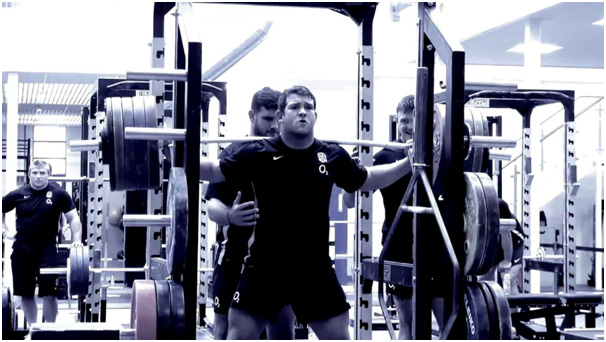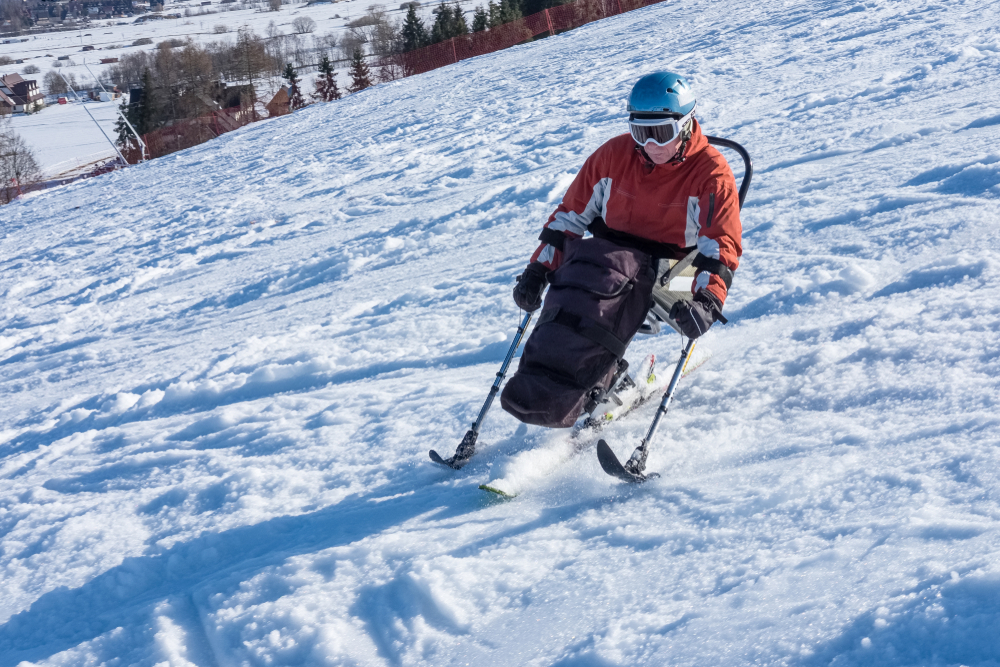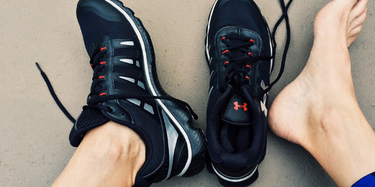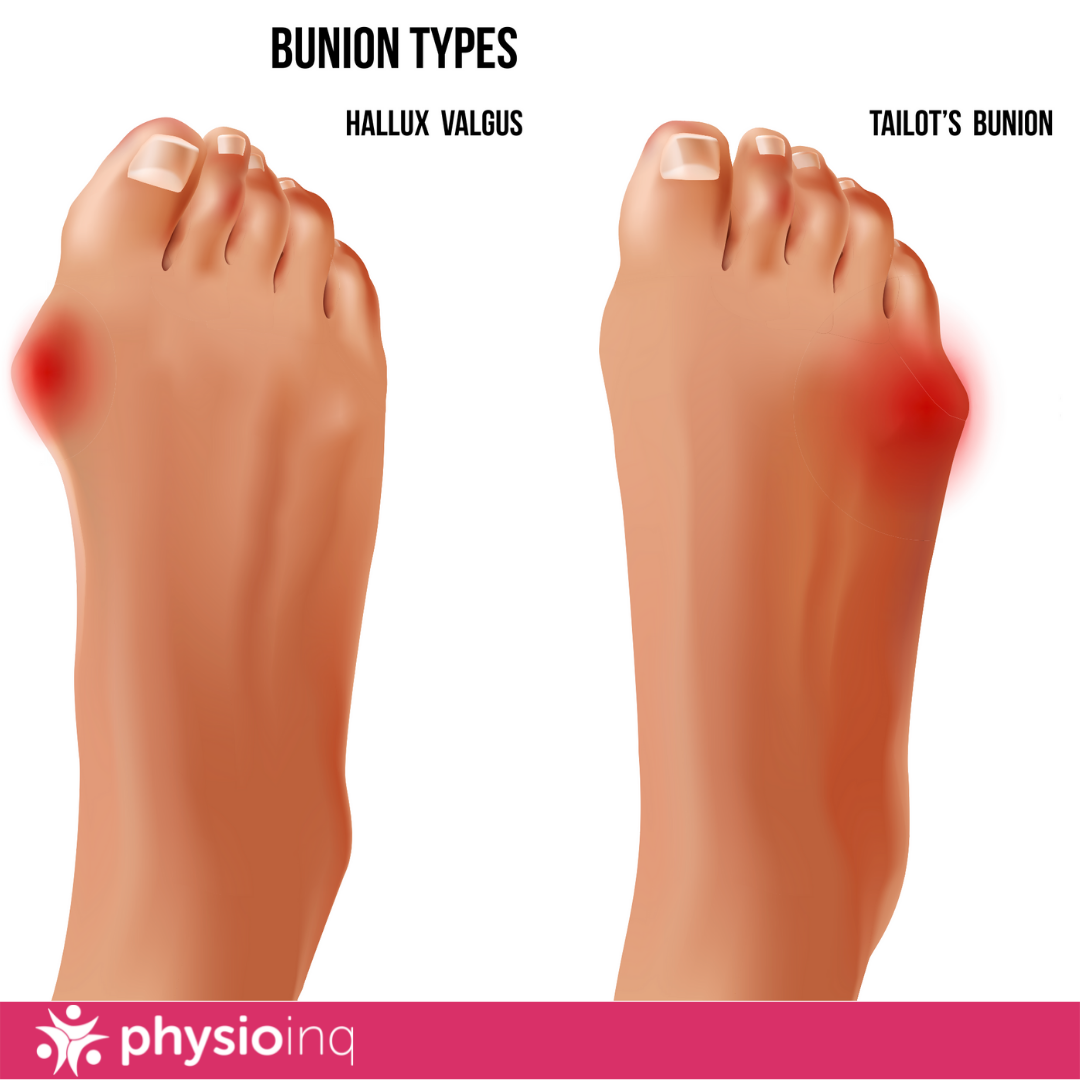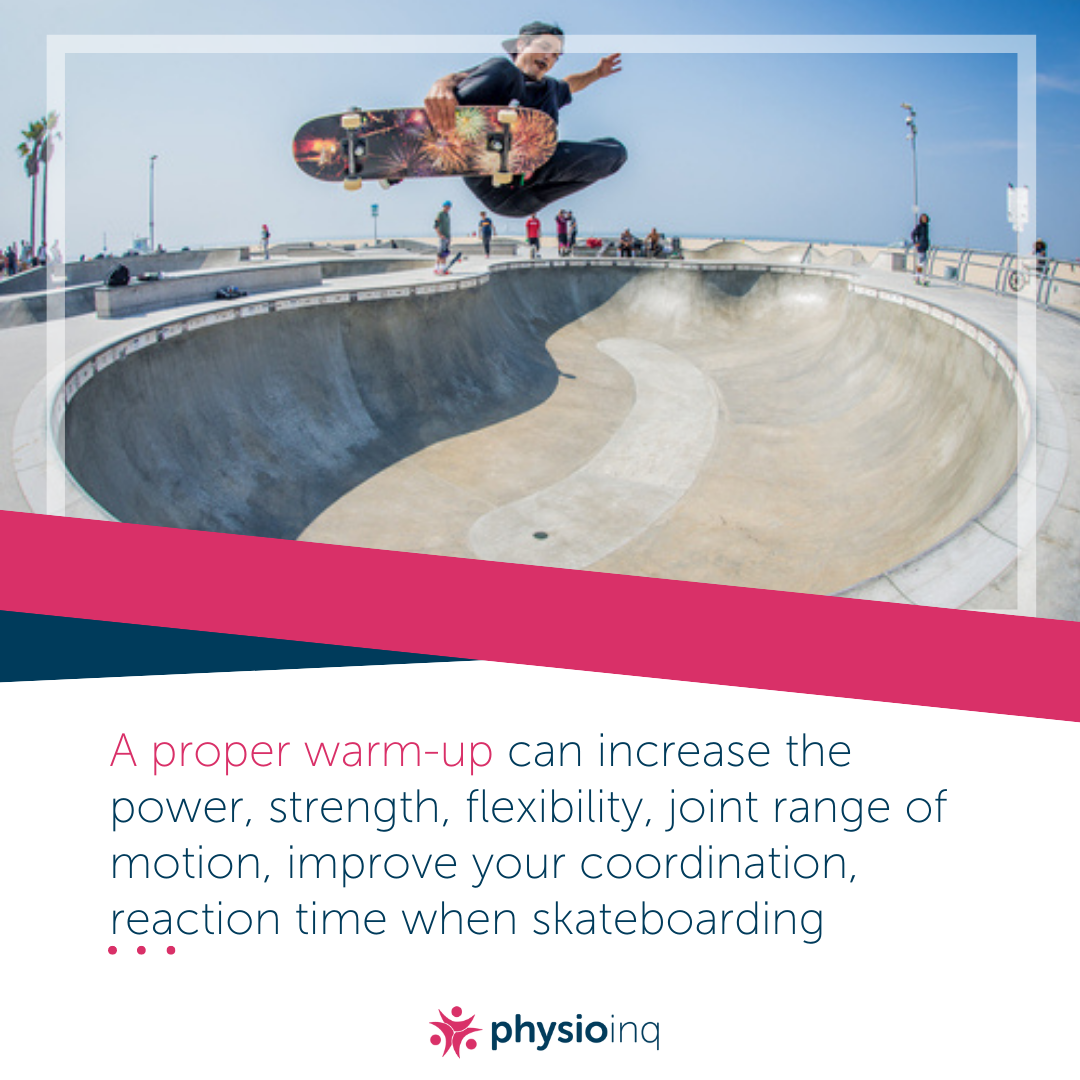Make an Appointment
Foot Stress Fractures
A stress fracture in the foot is a small crack in one of the weightbearing bones, commonly the metatarsals, navicular or calcaneus, caused by repetitive overload rather than a single injury. Common in runners, dancers and military recruits, these fractures develop when bone remodelling cannot keep pace with repeated force, leading to micro-cracks that eventually coalesce.
Early symptoms include gradual onset of localized pain that worsens with activity and eases with rest, often accompanied by tenderness and mild swelling. Because plain X-rays may miss early stress changes, MRI or bone scan is often required for accurate diagnosis. Taping can provide temporary support and pain relief but must be combined with activity modification and a structured rehabilitation plan to ensure proper healing and prevent progression to a complete fracture

What Is a Stress Fracture of the Foot?
Definition & Anatomy
A foot stress fracture most often affects weightbearing bones such as the metatarsals, navicular, calcaneus or tarsal navicular. Instead of an acute break, a stress fracture develops micro-cracks when the bone’s capacity to remodel is overwhelmed by repeated loading.
Common Signs & Symptoms
- Gradual Onset of Pain: Localised to a bony area; increases with activity, eases with rest.
- Tenderness & Swelling: Point tenderness over the fracture site; may be subtle early on.
- Bruising (Occasionally): Less common than full fractures but possible if micro-cracks coalesce.
Importance of Early Recognition
Leaving a stress fracture untreated can progress to a complete fracture, requiring surgical intervention and longer recovery. Early diagnosis: via MRI or bone scan if X-rays are inconclusive, ensures timely management.

What Causes a Stress Fracture?
Repetitive Overuse & Biomechanical Stress
- Running & Jumping Sports: High-impact activities such as running, basketball or netball subject foot bones to repetitive axial load.
- Sudden Increase in Volume: Rapid escalation in training hours or intensity without adequate adaptation.
- Poor Technique & Equipment: Inappropriate footwear, hard surfaces and biomechanical faults (flat feet, high arches) amplify stress.
Risk Factors
- Female Athlete Triad: Low energy availability, menstrual dysfunction and low bone density can predispose to stress fractures.
- Nutritional Deficiencies: Insufficient calcium, vitamin D and protein impairs bone remodeling.
- Previous Fracture History: A past stress fracture increases recurrence risk by 30–50%.
- Bone Density: Elderly or osteoporotic individuals sustain stress fractures even with minimal loading.
Prevention Strategies
- Progressive Training Plans: Increase mileage or impact loads by no more than 10% per week.
- Cross-Training: Incorporate low-impact activities: swimming, cycling or elliptical, to maintain cardiovascular fitness while reducing foot stress.
- Footwear Assessment: Rotate shoes every 300–500km of running or replace every six months; choose footwear with adequate cushioning and arch support.
- Strength & Mobility Programs:
- Physiotherapy Exercises: Focus on foot intrinsic muscle strengthening, calf-soleus flexibility, and hip stability.
- Weight-Bearing Resistance Training: Stimulates bone remodeling through controlled loading; supervised by an exercise physiologist.

Can I Walk with a Stress Fracture in My Foot?
Graded Weightbearing Guidelines
- Early Phase (First 2–4 Weeks):
- Aim for partial weightbearing with crutches or a walking boot if pain is moderate.
- Limit walking to short distances (< 10 minutes) on flat, even surfaces.
- Use taping or orthoses to support the arch and midfoot, only if approved by your clinician.
- Intermediate Phase (Weeks 4–8):
- Gradually progress to full weightbearing as pain allows; monitor symptoms closely.
- Introduce a limp-free walking pattern, start on a firm, cushioned surface (e.g., treadmill set to low speed or indoor track).
- Late Phase (Weeks 8+):
- Transition to barefoot or supportive athletic footwear with cushioned insoles.
- Increase walking duration incrementally (± 5 minutes per day), monitoring for pain or swelling.
- Avoid high-impact surfaces (concrete) until complete healing is confirmed via imaging.
Risks of Early Full Weightbearing
- Delayed Union: Premature loading can propagate micro-cracks, extending recovery time.
- Secondary Injuries: Altered gait mechanics to offload pain can strain the hip, knee or opposite foot.
Safe Ambulation Tools
- Rocky Mountain Walking Boot: Offers immobilisation for early protection.
- Shock-Absorbing Insoles: Reduces ground reaction forces during midfoot loading.
- Walking Aids: Crutches or a walking cane for offloading until you can ambulate pain-free.

Should I Tape a Stress Fracture in My Foot?
Benefits of Taping
- Compression & Support: A well-applied rigid or semi-rigid tape job limits painful micro-movements at the fracture site, reducing pain during ambulation.
- Offloading & Stabilisation: By subtly redistributing load away from the stressed bone, taping can ease weightbearing stresses.
- Proprioceptive Feedback: The tactile input reminds you to limit high-impact activities.
When to Tape - and When Not To
- Ideal Timing: Once medical imaging confirms a low-grade stress fracture (Grade I–II) and no displaced fragments.
- Contraindications:
- Open or acute fractures requiring immobilisation (e.g., walking boot).
- Severe swelling or compromised circulation at the injury site.
Taping Technique Overview
1. Clean & Dry Skin: Ensure the foot is free of oils or lotions.
2. Base Layer (Optional): A thin, protective underwrap (e.g., foam) to reduce skin irritation.
3. Anchor Strips:
- Place two anchor strips around the midfoot (proximal to metatarsal heads) and around the ankle.
4. Figure-8 Patterns:
- Begin with a strip under the arch, looping around the ankle in a figure-8 to stabilise the midfoot.
- Apply 2–3 more figure-8 strips, overlapping by half their width.
5. Stirrups:
- Apply stirrup strips on each side of the Achilles tendon, running from anchor at medial midfoot to anchor at lateral foot to prevent excessive inversion/eversion.
6. Lock Strips & Closure:
- Finish with a layer of stabilising strips around the entire taping area, ensuring no gaps or excessive creases.
- Ensure toes remain unbound (to monitor circulation).
Tip: Consider having a trained physiotherapist demonstrate taping the first time. A poorly applied tape job can cause skin breakdown or impede circulation.
For personalised taping tuition and ongoing support, book an in-home physiotherapy session with Physio Inq Mobile Physiotherapy.
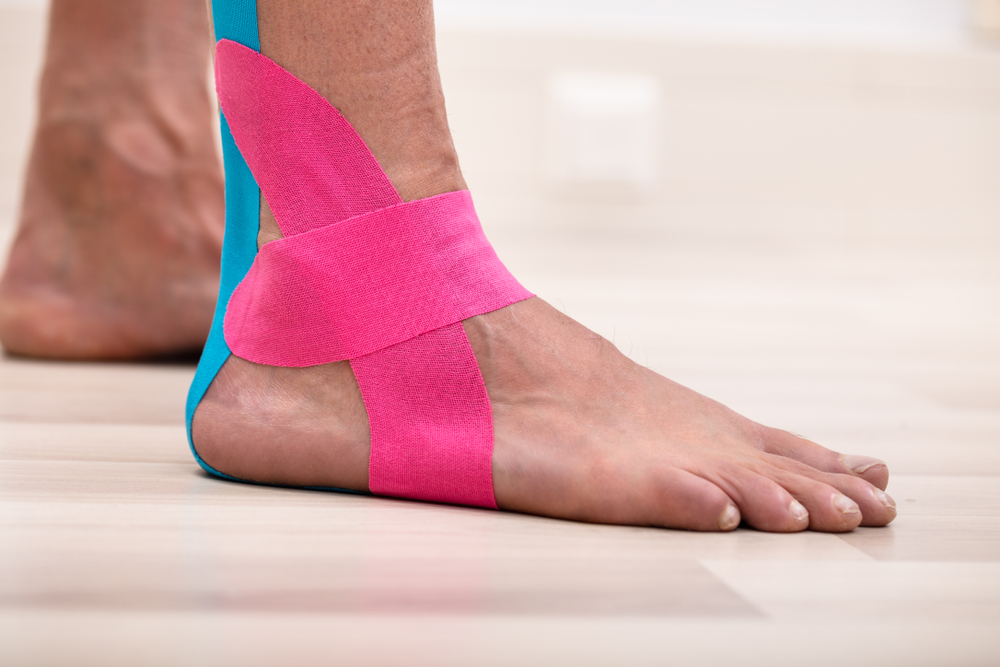
How to Heal a Foot Stress Fracture Quickly
6.1 Adequate Rest & Offloading
- Initial Immobilisation: Use a walking boot or brace for 4–6 weeks until pain is minimal at rest.
- Activity Modification: Substitute high-impact activities with swimming or aqua jogging, which maintain cardiovascular fitness without stressing the foot.
6.2 Nutrition & Bone Health
- Calcium & Vitamin D: Aim for 1,000–1,300mg calcium and 800–1,000 IU vitamin D daily through diet and supplementation.
- Protein Intake: Ensure 1.2–1.6 g protein/kg body weight to support bone and muscle repair.
- Collagen & Micronutrients: Consider collagen peptides, magnesium and vitamin K₂ to enhance bone matrix quality.
6.3 Physiotherapy-Led Rehabilitation
- Phase 1 (Weeks 0–4):
- Gentle isometric foot and toe exercises to maintain muscle tone without loading the fracture.
- Non-weightbearing mobility exercises (e.g., ankle dorsiflexion/plantarflexion seated).
- Phase 2 (Weeks 4–8):
- Progress to partial weightbearing in boot, introduce taping for midfoot support.
- Begin theraband foot “doming” and toe-curl strengthening to rebuild arch stability.
- Perform hip abductor and core exercises to correct proximal kinetic chain weaknesses.
- Phase 3 (Weeks 8–12+):
- Full weightbearing in supportive athletic shoes with cushioned insoles.
- Initiate strength & conditioning: calf raises, step-ups, and ankle proprioception drills.
- Gradually reintroduce jogging on soft surfaces, followed by structured return-to-run protocols (e.g., walk-jog intervals).
6.4 Adjunct Therapies
- Shockwave Therapy: Emerging evidence suggests extracorporeal shockwave can stimulate healing in recalcitrant stress fractures.
- Low-Level Laser Therapy (LLLT): May accelerate bone repair when used in conjunction with standard care.
- Pain Management: Over-the-counter NSAIDs for short-term pain relief, use sparingly to avoid inhibiting bone healing.
Always consult your doctor or physiotherapist before starting any new treatment plan to ensure it’s safe and appropriate for your specific condition.

Frequently Asked Questions (FAQs)
Q1: What is a stress fracture foot?
A stress fracture foot is a hairline crack in one of the weightbearing bones, commonly the second or third metatarsal, navicular or calcaneus, caused by repetitive loading that overwhelms bone remodeling capacity.
Q2: Should I tape a stress fracture in my foot?
Taping can provide compression and offloading, reduce painful micro-movements and enhance proprioception. However, it should only be done under professional guidance, as improper taping can impair circulation or mask worsening symptoms.
Q3: Can I walk if I have a stress fracture in my foot?
Walking is allowed in a graded, protected manner, initially with a walking boot or crutches to offload the injured bone. Gradually transition to partial then full weightbearing only when pain-free for 48 hours. Consult your physiotherapist before resuming unassisted walking.
Q4: What causes a stress fracture?
Stress fractures result from repetitive overuse (running, jumping), sudden increases in training load, biomechanical faults (overpronation, leg-length discrepancies), nutritional deficiencies (low calcium/Vit D), and factors such as the female athlete triad.
Q5: How do I heal a foot stress fracture quickly?
Key steps include adequate immobilisation (boot or brace), activity modification (aquatic exercise), optimal nutrition (calcium, vitamin D, protein), and a phased physiotherapy program focusing on intrinsic foot musculature, core stability and gradual return to impact exercises.
Foot stress fractures demand early recognition, appropriate offloading and structured rehabilitation to prevent progression and long-term disability. Taping can play a supportive role when applied correctly, but must be combined with rest, nutrition and physiotherapy-led strengthening. By following a phased approach and leveraging evidence-based strategies, many athletes and active individuals return to full function within 8–12 weeks.
Next Steps:
- Screen & Diagnose: If you suspect a stress fracture (point tenderness, gradual-onset pain), seek imaging (MRI or bone scan) and clinical assessment.
- Book Expert Support: Schedule an in-home or in-clinic physiotherapy evaluation with Physio Inq for personalised taping instruction, gait analysis and tailored rehab: Book Now.
- Adhere to Rehab Milestones: Follow your physiotherapist’s phased program, incorporating taping, non-weightbearing exercises and progression to functional strength training.
- Prevent Recurrence: Work with an exercise physiologist to develop balanced cross-training and monitor training volume, footwear and technique to protect bone health.
Call 1300 731 733 to get started on a safe, effective recovery.

Date Published: Thursday, May 26, 2022
Locate a Mobile Physiotherapy
Service Near me
Get the experience & convinence you deserve to support your or a loved one's allied health needs.
Our Mobile Physiotherapy team are currently serving & taking appointments in the following states and regions in Australia:
Need to get into direct contact with ur Client Services team? We're all ears. Call our team directly on 1300 731 733



